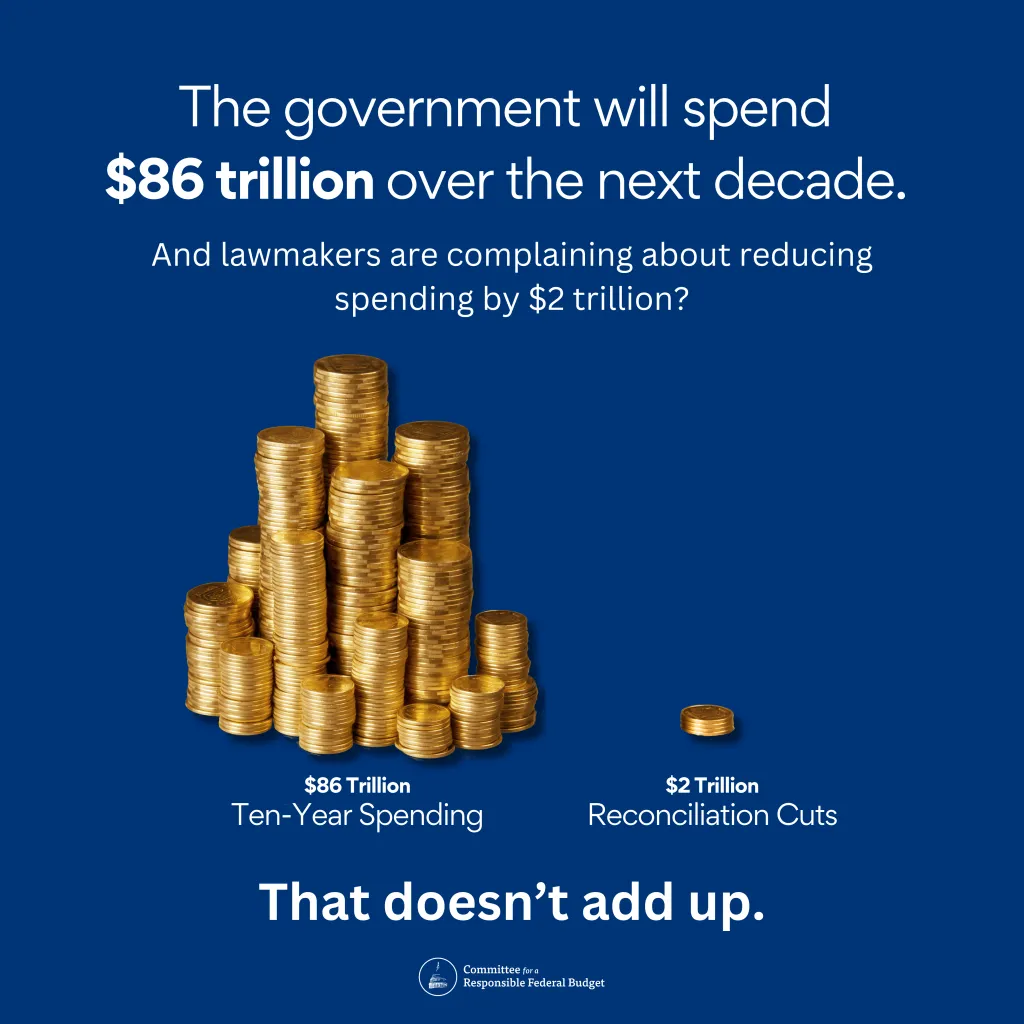A $2 Trillion Cut Compared to $86 Trillion in Spending
The House-adopted Fiscal Year (FY) 2025 budget resolution calls for up to $2 trillion in spending cuts as partial offsets for $4.8 trillion of tax cuts and spending increases. Even with those offsets, the ensuing reconciliation bill would add $2.8 trillion to deficits through 2034 before interest.
As we noted before, this $2 trillion spending cut – $1.7 trillion net of the spending increases – would not be the largest cut in history, and it would come at a time when annual deficits are nearly $2 trillion, total borrowing through FY 2034 will total $21 trillion, and interest payments on the debt will total $13 trillion.
Viewed in context of the total amount of spending projected by the Congressional Budget Office (CBO) over the next decade, however, a $2 trillion cut is not all that large. Over the ten years from FY 2025 through 2034, CBO projects the federal government will spend a total of nearly $86 trillion. That means a $2 trillion cut would only represent about 2.3 percent of total projected spending.

Budgeting is all about priorities. If lawmakers feel they must have their $4.0 to $4.5 trillion in tax cuts and tax cut extensions as well as their $300 billion in increased spending for national defense and border security, then they should come up with an additional $2.8 trillion of spending cuts or revenue increases to ensure we don’t unnecessarily add to our already recklessly high national debt.

